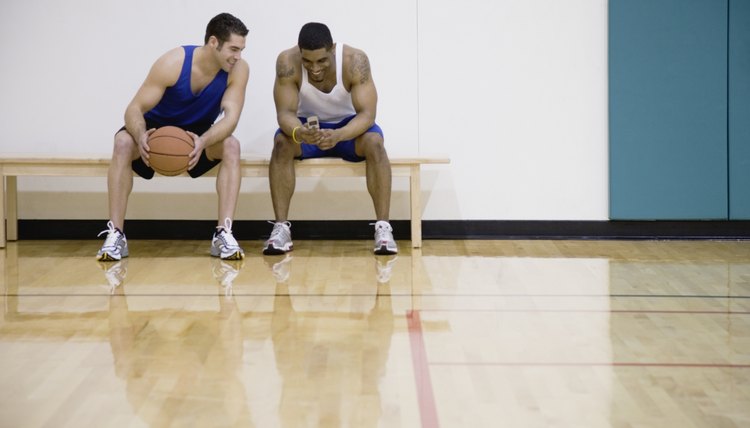Does the Temperature of a Basketball Affect the Bounce of the Ball?

A basketball that doesn't bounce is a terrible thing. Poor care, improper inflation techniques and other factors can contribute to poor basketball bounces. But one thing that you may not know is how temperature affects the way the ball bounces. The answer involves a little bit of science, but the practical rewards will keep your basketball in play, day after day.
Ideal Gas Law
The ideal gas law states that for an isolated system, a specific relationship is between pressure, volume and temperature. For closed systems this relationship can be understood as initial pressure divided by initial volume equals final pressure divided by final volume. For consideration with basketballs it means that with the same volume of air, a basketball exposed to higher temperatures will have increased pressure. Conversely, a basketball exposed to lower temperature will feature a loss in pressure.
Practical Application
Understanding how the ideal gas law affects your basketball's playability is important. The NBA states that a basketball must be inflated between 7.5 and 8.5 lb. of pressure. Using the ideal gas law and assuming that a ball is filled at room temperature, we can estimate that for every 10 degrees of temperature change, a ball will increase its pressure by one pound. For example: a ball inflated to 8.5 pounds of pressure at 75 degrees F will drop to 7.37 pounds of pressure if the temperature is lowered to 65 degrees F.
Considerations
Pressure is directly related to how high a ball bounces. Higher pressure equals higher bounces, lower pressure equals lower bounces. If you play indoors, it is unlikely that the temperature will change enough to affect the ball's bounce. For outdoor players, the difference between night and day temperature may affect the ball's bounce more significantly. Whether you play outdoors or indoors, check the pressure of your ball each time before you play.
Storage
While pressure drops and temperature changes during play or possible, it is how temperature affects the ball when you aren't playing that you should worry about. Never store the ball in the trunk of a car, where hot days can greatly increase ball pressure, possibly damaging seals. If you inflate a ball more to compensate for cold temperatures, remember to let some air out before bringing the ball inside or exposing to warm temperatures.
References
Writer Bio
Patrick Hutchison has been doing freelance work since 2008. He has worked as a physical therapy aide and as a writer for various websites including Destination Guides and several travel-related companies. Hutchison has a Bachelor of Arts in history and anthropology from the University of Washington.
